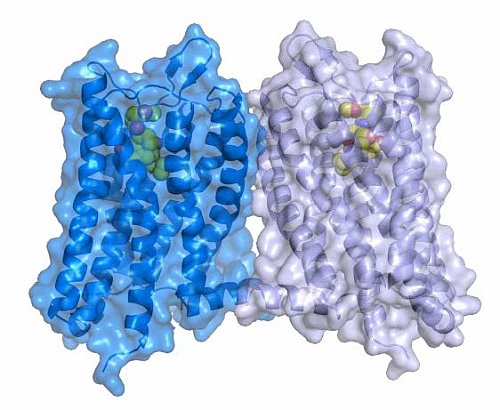The group of Brian Kobilka and collaborators have determined structures of two of the four types of opioid receptors, as featured in the journal, Nature, along with publications on the two other types of opioid receptors from the group of Ray Stevens and collaborators. Opium extracts have been used for therapeutic and recreational purposes for thousands of years. Morphine and codeine are the main active opioid alkaloids in opium. In humans, opioids act on the central nervous system to produce a wide range of effects including analgesia, euphoria, sedation, and respiratory depression. The majority of the effects of opioid alkaloids, whether beneficial or adverse, are mediated by the mu-opioid receptor, a GPCR having two closely related family members known as the delta- and kappa-opioid receptors and a more distant relative known as the nociceptin/orphanin FQ receptor. The structures of the mu-opioid receptor and of the delta-opioid receptor provide insights into conserved elements of opioid ligand recognition while also revealing structural features associated with ligand subtype selectivity. The high-resolution insights into opioid receptor structure will enable the application of structure-based approaches to develop better drugs for the management of pain and addiction.
 |
Figure: A transparent surface view of the mu-opioid receptor dimer shows the covalent agonist beta-funaltrexamine as yellow spheres in binding pockets of the crystallized dimer. |
Citation:
Manglik, A, Kruse, AC, Kobilka, TS, Thian, FS, Mathiesen, JM, Sunahara, RK,
Pardo, L, Weis, WI, Kobilka, BK, Granier, S. Crystal structure of the
mu-opioid receptor bound to a morphinan antagonist, Nature 485, 321-326
(2012). Granier, S, Manglik, A, Kruse, AC, Kobilka, TS, Thian, FS, Weis, WI,
Kobilka, BK. Structure of the delta-opioid receptor bound to naltrindole,
Nature 485, 400-404 (2012).